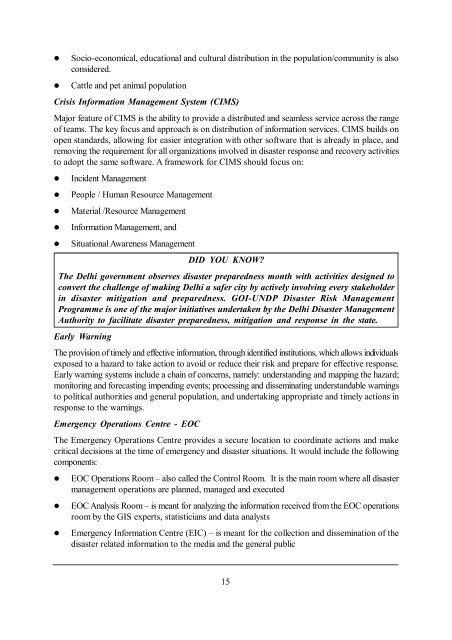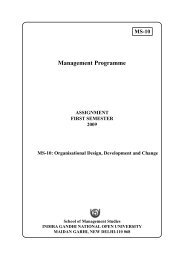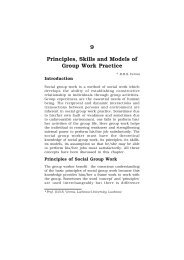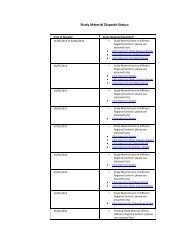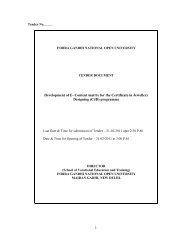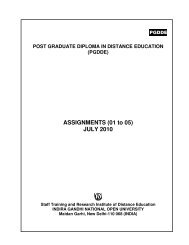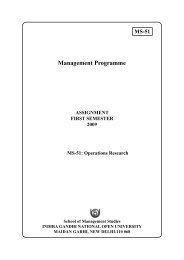Disaster Preparedness and Mitigation - IGNOU
Disaster Preparedness and Mitigation - IGNOU
Disaster Preparedness and Mitigation - IGNOU
You also want an ePaper? Increase the reach of your titles
YUMPU automatically turns print PDFs into web optimized ePapers that Google loves.
Socio-economical, educational <strong>and</strong> cultural distribution in the population/community is also<br />
considered.<br />
Cattle <strong>and</strong> pet animal population<br />
Crisis Information Management System (CIMS)<br />
Major feature of CIMS is the ability to provide a distributed <strong>and</strong> seamless service across the range<br />
of teams. The key focus <strong>and</strong> approach is on distribution of information services. CIMS builds on<br />
open st<strong>and</strong>ards, allowing for easier integration with other software that is already in place, <strong>and</strong><br />
removing the requirement for all organizations involved in disaster response <strong>and</strong> recovery activities<br />
to adopt the same software. A framework for CIMS should focus on:<br />
<br />
<br />
<br />
<br />
<br />
Incident Management<br />
People / Human Resource Management<br />
Material /Resource Management<br />
Information Management, <strong>and</strong><br />
Situational Awareness Management<br />
DID YOU KNOW?<br />
The Delhi government observes disaster preparedness month with activities designed to<br />
convert the challenge of making Delhi a safer city by actively involving every stakeholder<br />
in disaster mitigation <strong>and</strong> preparedness. GOI-UNDP <strong>Disaster</strong> Risk Management<br />
Programme is one of the major initiatives undertaken by the Delhi <strong>Disaster</strong> Management<br />
Authority to facilitate disaster preparedness, mitigation <strong>and</strong> response in the state.<br />
Early Warning<br />
The provision of timely <strong>and</strong> effective information, through identified institutions, which allows individuals<br />
exposed to a hazard to take action to avoid or reduce their risk <strong>and</strong> prepare for effective response.<br />
Early warning systems include a chain of concerns, namely: underst<strong>and</strong>ing <strong>and</strong> mapping the hazard;<br />
monitoring <strong>and</strong> forecasting impending events; processing <strong>and</strong> disseminating underst<strong>and</strong>able warnings<br />
to political authorities <strong>and</strong> general population, <strong>and</strong> undertaking appropriate <strong>and</strong> timely actions in<br />
response to the warnings.<br />
Emergency Operations Centre - EOC<br />
The Emergency Operations Centre provides a secure location to coordinate actions <strong>and</strong> make<br />
critical decisions at the time of emergency <strong>and</strong> disaster situations. It would include the following<br />
components:<br />
<br />
<br />
<br />
EOC Operations Room – also called the Control Room. It is the main room where all disaster<br />
management operations are planned, managed <strong>and</strong> executed<br />
EOC Analysis Room – is meant for analyzing the information received from the EOC operations<br />
room by the GIS experts, statisticians <strong>and</strong> data analysts<br />
Emergency Information Centre (EIC) – is meant for the collection <strong>and</strong> dissemination of the<br />
disaster related information to the media <strong>and</strong> the general public<br />
15


